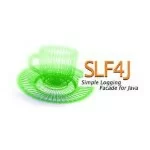Building your own GWT Spring Maven Archetype
Hello everyone,
While watching this really interesting articles by Justin about Spring and GWT,i thought that it would be extremely useful to show how to build your own custom maven archetype .The archetype we will present is based on the last project of Justin and includes various technologies like Spring,GWT,AspectJ,HornetQ and Infinispan.
Enough talking ,let’s get our hands dirty now.
Preparation of the archetype.
First you must have a template project that you will use to build your archetype.In our presentation you will find Justin project here.
Change directory to the root directory of the project and run the following command.
1 | mvn archetype:create-from-project |
After the completion of the command you will find a new project that is generated at the following location ${project_home}/target/generated-sources/archetype.Its a complete maven archetype project that you can customize for your needs.
- At folder src/main/resources/META-INF/maven you will find archetype-metadata.xml which is the descriptor of the archetype.
- At folder src/main/resources/archetype-resources is the template project that is going to be generated.
Customization of archetype.
Maven archetypes use apache velocity to generate their code. You can access velocity variables in a file by setting the following constants at the top of a file:
1 2 3 | #set( $symbol_pound = '#' )#set( $symbol_dollar = '$' )#set( $symbol_escape = '\' ) |
Then you have access to maven properties like artifactId by using this syntax ${artifactId}.Also you can use the following syntax __artifactId__ to access the value of a parameter.
The basic parameters that every archetype has are the following :
- groupId
- artifactId
- version
- package
Also you can set as many variables as you want at the archetype-metadata.xml using the following syntax :
1 2 3 4 5 | <requiredproperties _moz-userdefined=""> <requiredproperty _moz-userdefined="" key="custom_variable"> <defaultvalue _moz-userdefined="">default_value</defaultvalue> </requiredproperty></requiredproperties> |
please notice that each time you add a variable you should edit src/test/resources/projects/basic/archetype.properties and add your parameter.
1 2 3 4 | version=0.1-SNAPSHOTgroupId=archetype.itartifactId=basiccustom_variable=default_value |
In our example we performed the following changes:
At src/main/resources/META-INF/maven/archetype-metadata.xml
01 02 03 04 05 06 07 08 09 10 11 12 13 14 15 16 17 | <requiredProperties> <requiredProperty key="db"> <defaultValue>derby</defaultValue> </requiredProperty> <requiredProperty key="dburl"> <defaultValue>javacodegeeks</defaultValue> </requiredProperty> <requiredProperty key="dbusername"> <defaultValue>***</defaultValue> </requiredProperty> <requiredProperty key="dbpassword"> <defaultValue>***</defaultValue> </requiredProperty> <requiredProperty key="cache"> <defaultValue>y</defaultValue> </requiredProperty></requiredProperties> |
1 2 3 4 5 | db=derbydburl=javacodegeeksdbusername=testdbpassword=testcache=n |
At src/main/resources/archetype-resources/pom.xml
01 02 03 04 05 06 07 08 09 10 11 12 13 14 15 16 17 18 | #if( $db == "derby" ) <dependency> <groupId>org.apache.derby</groupId> <artifactId>derby</artifactId> <version>10.6.1.0</version> </dependency> #elseif( $db == "mysql" ) <dependency> <groupId>mysql</groupId> <artifactId>mysql-connector-java</artifactId> <version>5.1.13</version> </dependency> #else <dependency> <groupId>org.apache.derby</groupId> <artifactId>derby</artifactId> <version>10.6.1.0</version> </dependency> |
And
01 02 03 04 05 06 07 08 09 10 11 12 13 14 15 16 17 18 19 20 21 22 23 | <plugin> <artifactId>maven-resources-plugin</artifactId> <version>2.4.3</version> <executions> <execution> <id>copy-resources</id> <!-- here the phase you need --> <phase>validate</phase> <goals> <goal>copy-resources</goal> </goals> <configuration> <outputDirectory>${basedir}/src/main/webapp/${package}.Application</outputDirectory> <resources> <resource> <directory>${basedir}/src/main/resources/${artifactId}</directory> <filtering>true</filtering> </resource> </resources> </configuration> </execution> </executions> </plugin> |
At src/main/resources/archetype-resources/src/main/webapp/WEB-INF/applicationContext.xml
01 02 03 04 05 06 07 08 09 10 11 12 13 14 15 16 17 18 19 20 21 22 23 24 25 26 27 28 29 30 31 | #if($db == "mysql") <bean id="dataSource" class="com.atomikos.jdbc.AtomikosDataSourceBean" init-method="init" destroy-method="close"> <property name="uniqueResourceName" value="javacodegeeks" /> <property name="xaDataSourceClassName" value="com.mysql.jdbc.jdbc2.optional.MysqlXADataSource" /> <property name="xaProperties"> <props> <prop key="URL">${dburl}</prop> <prop key="user">${dbusername}</prop> <prop key="password">${dbpassword}</prop> </props> </property> <property name="maxPoolSize" value="50" /> <property name="minPoolSize" value="20" /> </bean> #else <bean id="dataSource" class="com.atomikos.jdbc.AtomikosDataSourceBean" init-method="init" destroy-method="close"> <property name="uniqueResourceName" value="javacodegeeks" /> <property name="xaDataSourceClassName" value="org.apache.derby.jdbc.EmbeddedXADataSource" /> <property name="xaProperties"> <props> <prop key="databaseName">${dburl}</prop> <prop key="createDatabase">create</prop> </props> </property> <property name="maxPoolSize" value="50" /> <property name="minPoolSize" value="20" /> </bean> #end |
At src/main/resources/archetype-resources/src/main/resources/META-INF/persistence.xml
01 02 03 04 05 06 07 08 09 10 11 12 13 14 15 16 17 | #if($cache == "y") <property name="hibernate.cache.use_second_level_cache" value="true"/> <property name="hibernate.cache.use_query_cache" value="true"/> <property name="hibernate.cache.region.factory_class" value="org.hibernate.cache.infinispan.InfinispanRegionFactory"/> <!-- <property name="hibernate.cache.infinispan.entity.eviction.strategy" value= "LRU"/> <property name="hibernate.cache.infinispan.entity.eviction.wake_up_interval" value= "2000"/> <property name="hibernate.cache.infinispan.entity.eviction.max_entries" value= "5000"/> <property name="hibernate.cache.infinispan.entity.expiration.lifespan" value= "60000"/> <property name="hibernate.cache.infinispan.entity.expiration.max_idle" value= "30000"/> --> #else <property name="hibernate.cache.use_second_level_cache" value="false"/>^M <property name="hibernate.cache.use_query_cache" value="false"/>^M #end |
Rename com/javacodegeeks/gwtspring/public folder to __artifactId__ .
Installing and Running the archetype
To install the archetype go to the root folder of the archetype and type.
1 | mvn install |
This should create ~/.m2/archetype-catalog.xml file that you can import to eclipse if you are an eclipse an m2eclipse user.
To run the archetype run the following.
1 | mvn archetype:generate -DarchetypeCatalog=local -DarchetypeGroupId=com.javacodegeeks -DarchetypeArtifactId=gwtspring-archetype |
Or create a new maven project in eclispe and select the archetype from the local catalog you imported from ~/.m2/archetype-catalog.xml .
*** Notice that the archetype might be snapshot and you should check “Include snapshots archetypes”.
The source code of the archetype is available here.
Hope you enjoy this article,
Best regards,
Pat





